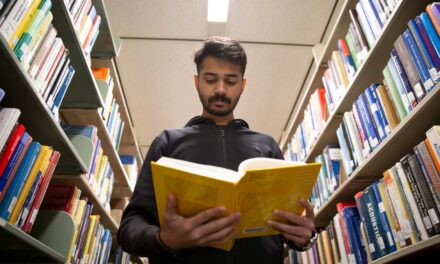
Meet the new Fulton Schools faculty of 2016–2017
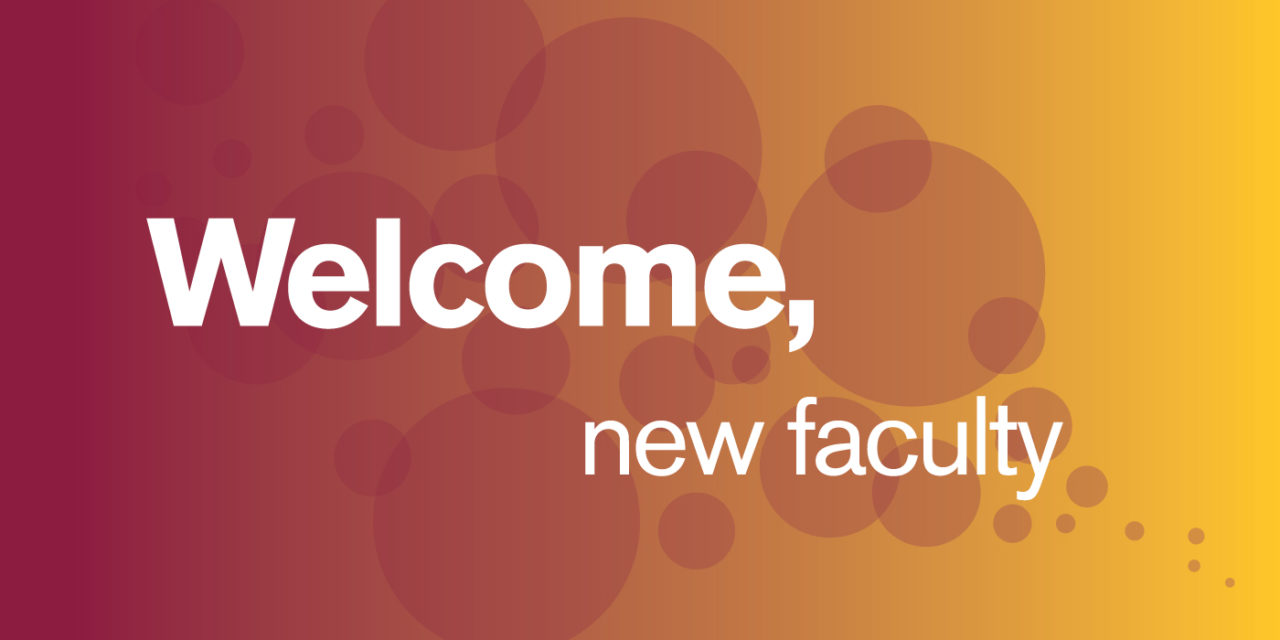
As the student body and programs grow in Arizona State University’s Ira A. Fulton Schools of Engineering, we bring in new faculty to help our students succeed and to continue to advance the cutting edge in all engineering fields.
Read about the challenges our new faculty members are working to solve, how they got their start in engineering, the classes they’ll be teaching and more.
Get to know each of the 2016-2017 new faculty members below:
Academic and Student Affairs
Deana Rae Delp, Lecturer
Ph.D., Arizona State University
Read more
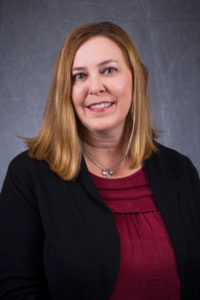 Deana Rae Delp has now been both a student and an instructor at ASU. After conducting her graduate studies in electrical engineering as a Sun Devil, she set out to work in industry and academia, and has now returned full-time to her alma mater.
Deana Rae Delp has now been both a student and an instructor at ASU. After conducting her graduate studies in electrical engineering as a Sun Devil, she set out to work in industry and academia, and has now returned full-time to her alma mater.
“I enjoy interacting with the students and helping them grow as engineers,” says Delp, a senior member of the Institute of Electrical and Electronics Engineers.
Teaching, research and engineering projects have always brought her enjoyment, and her love for math and science goes back to her childhood on a Kansas farm.
“As a young child I would help my dad count cattle,” Delp recounts. “He would tell me, ‘Count the legs and divide by four,’ so he knew my interest in math at an early age.”
In 2016, Delp was awarded a KEEN Professorship along with Lecturer Shankar Ramakrishnan and Assistant Professor Micah Lande for work they’re doing with the freshman engineering project courses on the Polytechnic campus.
She says students in her EGR 101/102: Foundations of Engineering Design I/II courses should be ready for lots of projects and hands-on work.
It’s Delp’s first semester teaching EGR 102, and she’s excited to be an instructor for this project-oriented course.
“This semester we’re adding a musical component to the class, which should be entertaining,” Delp says.
She herself has some musical talent on the piano. Delp also enjoys hiking in the Valley and spending time with her family.
School of Biological and Health Systems Engineering
Tony Hu, Associate Professor
Ph.D., University of Texas at Austin
Read more
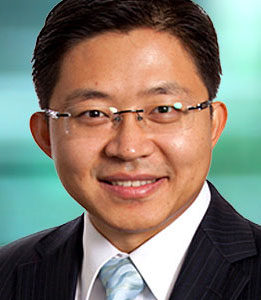 An expert in nanotechnology, biomarker discovery and validation, mass spectrometry and translation diagnostic research, Tony Hu came to ASU after working as an associate professor at Houston Methodist Research Institute.
An expert in nanotechnology, biomarker discovery and validation, mass spectrometry and translation diagnostic research, Tony Hu came to ASU after working as an associate professor at Houston Methodist Research Institute.
“I was seeking a highly reputable academic institution that encourages our continued international development and allows us to expand the depth and breadth of research and hence promotes our contribution to biomarker studies,” Hu says of search for a home for his research team.
Hu’s research focuses on the development of biomarker discovery and non-invasive diagnostic tools that leverage nanotechnology.
“Our state-of-the-art research and innovations aim to fill the current diagnostic gap on risk assessment, screening, early detection, real-time therapeutic monitoring and effective prognostics in the areas of cancer and infectious diseases,” says Hu. “We have been making strong efforts in combining advanced engineering tools to facilitate biomedical studies and develop robust diagnostics for precision medicine initiatives.”
Hu hopes to make a difference in medicine using his engineering background. His guiding research principles include making studies with a clinical impact a priority, collaborating with fellow nanotechnology researchers and maintaining a translational focus.
In support of their work, Hu and his research team have earned a variety of awards and grants from such organizations as the Department of Defense, the Bill & Melinda Gates Foundation, the National Institutes of Health and the John S. Dunn Foundation. Their research has been published in high profile journals such as Nature Biomedical Engineering, Nature Cell Biology, Nature Communication and Clinical Chemistry.
While Hu is not yet slated to teach any classes, he hopes to lead courses based on advanced molecular diagnosis, nanomaterial and translational nanomedicine.
Aside from his research, Hu enjoys running, soccer, badminton and the occasional karaoke set.
Sydney Schaefer, Assistant Professor
Ph.D., Pennsylvania State University
Read more
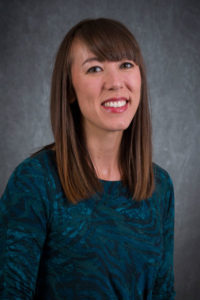 Prior to joining ASU, Sydney Schaefer was an assistant professor in exercise science at Utah State University. As a new faculty member, she brings with her the Motor Rehabilitation and Learning Lab, which conducts human research on the aging brain with applications in clinical physical rehabilitative practice.
Prior to joining ASU, Sydney Schaefer was an assistant professor in exercise science at Utah State University. As a new faculty member, she brings with her the Motor Rehabilitation and Learning Lab, which conducts human research on the aging brain with applications in clinical physical rehabilitative practice.
Her educational background is in sports medicine and kinesiology with an emphasis in motor control. She completed her postdoctoral training in stroke rehabilitation at Washington University in St. Louis.
Her research focuses on how the human nervous system learns new motor skills, and relearns existing skills through clinical neurorehabilitation.
One such area is improving upper extremity neurorehabilitation in older adults by studying how primary aging and cognitive impairment affect motor skill learning. In particular, she is interested in studying the effectiveness of task-specific training, which is a neurorehabilitative approach in which patients repetitively practice an activity of daily living to promote skill re-learning through mechanisms of neuroplasticity.
Across neurorehabilitation, older patients tend to be less responsive to therapy compared to younger patients. Schaefer is testing whether underlying age-related cognitive impairments and structural brain changes may reduce older adults’ responsiveness to task-specific training, and whether motor training could be enhanced with cognitive training. This work has implications for whether current clinical neurorehabilitation should be modified based on a patient’s age or cognitive status.
Her work has been funded by the National Institutes of Health and the American Heart Association. In 2015, she received a four-year Mentored Research Scientist Development Award from the National Institute on Aging.
“I am excited to grow my neurorehabilitation research program and to have new ideas emerge through working side by side with the incredible scientists here at ASU,” she says.
For the spring semester, she developed the course BME 598: Terminology and Application of Medical Models of Disability, which provides students with a foundation for neurorehabilitation research with respect to the frameworks of various models of disability.
“Students taking this class should be prepared to broaden their understanding of disability and rehabilitation by learning universal terminology, getting hands-on experience administering ‘industry-standard’ assessments, and designing creative rehabilitative solutions that are consistent with the World Health Organization’s disability framework,” she says.
Jamie Tyler, Associate Professor
Ph.D., University of Alabama at Birmingham
Read more
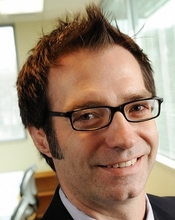 Jamie Tyler sees the function of universities in society changing, particularly in the ongoing evolutions of education delivery, technology and research. He says he chose to come to ASU because “ASU is not only embracing these changes, but pioneering them.”
Jamie Tyler sees the function of universities in society changing, particularly in the ongoing evolutions of education delivery, technology and research. He says he chose to come to ASU because “ASU is not only embracing these changes, but pioneering them.”
Likewise, Tyler is seeking to pioneer advances in his work. His expertise is in developing and translating tools that enable the noninvasive modulation of human brain circuits to improve or optimize human performance.
“The focus is on regulating human stress responses, sleep/wake cycles, mood and sensorimotor learning,” explains Tyler, whose doctoral degree is in behavioral neuroscience.
“My goal is to continue developing neurotechnologies that push the boundaries of what is possible, with the hope of enhancing brain health and human performance,” he says.
By developing tools that bridge medical neuroscience with consumer health, Tyler imagines that in the not-to-distant future he and colleagues in his field will produce such things as wearable, connected devices capable of modulating brain activity to optimize health and performance.
“People take drugs to do this today. That is all going to change. These are real movements that we have been driving, so that is what is really exciting about our work,” he says.
He foresees the field producing technological advances “that will provide completely new means of communication, entertainment, learning and medicine.”
Tyler will be teaching courses on entrepreneurship. He’s developing a basic entrepreneurship course aimed at younger students interested in building devices and starting companies.
The idea is to get freshman and sophomore biomedical engineering students into the course before they move on to their junior and senior years.
“We want to encourage an entrepreneurial mindset in those students before they begin to generate ideas and work on their engineering capstone design projects later in their careers at ASU,” he says.
Outside of his teaching and research pursuits, Tyler says he likes to “spend my free time roaming about wilderness.”
School of Computing, Informatics, and Decision Systems Engineering
Adolfo Escobedo, Assistant Professor
Ph.D., Texas A&M University
Read more
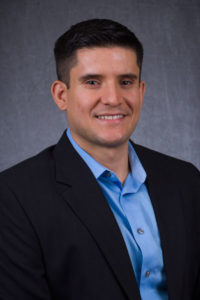 Adolfo Escobedo came to ASU from Texas A&M University where he graduated with a doctoral degree in industrial and systems engineering. He says he was captivated by ASU the moment he set foot on campus.
Adolfo Escobedo came to ASU from Texas A&M University where he graduated with a doctoral degree in industrial and systems engineering. He says he was captivated by ASU the moment he set foot on campus.
“The vibrant intellectual and social culture are unlike anything I had experienced at other universities.” ASU’s emphasis on inclusiveness is something that he finds to be a critical component of higher education today and aims to continue to be directly involved in that effort throughout his career.
Escobedo did not take a direct road to his current position. He started out as a history major for three years and then he switched to mathematics because he found that it was more challenging.
“Mathematics provided me the best opportunity to contribute to solving today’s problems,” he says. “However, soon after graduation, I discovered that the best field to achieve this is engineering.”
He chose industrial engineering in particular because its breadth allows the flexibility to work on multiple application areas and yet its rigorous foundations possess mathematical beauty.
“I continue to stay in this field because it is intellectually stimulating and it offers the possibility to have widespread impact on society,” he says.
Escobedo is currently working on optimizing the future operational capabilities of the national power grid during emergency conditions by developing mathematical models and computational techniques that incorporate the use of a key set of burgeoning technologies. These analytical tools would help support decision makers in this industry, and will help to minimize prolonged power outages that result in immense societal and economical costs. Minimizing the occurrence or duration of these events would bring substantial benefits to society. Escobedo’s other primary research interests include sustainability, social choice theory and optimization software design.
In his teaching, he says that he emphasizes both the theoretical foundations of optimization and the hands-on implementation of the optimization tool set. He says that his prospective students should be prepared to delve deep into mathematical concepts and to sharpen their creativity and quantitative skills by implementing their ideas via computer programming.
Javier Gonzalez-Sanchez, Lecturer
Ph.D., Arizona State University
Read more
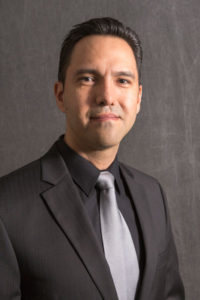 Fascinated by predictions of a computer-driven future, Javier Gonzalez-Sanchez threw himself into computer science at an early age.
Fascinated by predictions of a computer-driven future, Javier Gonzalez-Sanchez threw himself into computer science at an early age.
Gonzalez-Sanchez stuck with programming and computer systems engineering for the duration of his studies — from taking extra courses in high school to jumping into teaching after earning his bachelor’s degree.
His passion to share his knowledge of computing and programming continued into graduate school, eventually earning him recognition from Tecnologico de Monterrey’s Alumni Association. He has also been named an Association for Computing Machinery Senior Member.
When he decided to pursue his doctorate, he sought a program that reflected “the depth and breadth of computer science as … an art, an engineering discipline and as a creative human endeavor.” This, along with his interest in ASU’s transdisciplinary research approach, led him to the Fulton Schools. After attaining his doctoral degree, Gonzalez-Sanchez chose to stay on at his alma mater and join the faculty.
In working at ASU, Gonzalez-Sanchez says his expertise in computer science and software engineering has expanded through interaction and exchange of ideas with scholars from various backgrounds and areas of study.
This semester, Gonzalez-Sanchez will be teaching the courses Data Structures, Introduction to Graphics and Game Development and Software Factory, all of which he says teach and improve software engineering skills in a project-oriented context. Gonzalez-Sanchez will also manage the computing capstone project experience.
In addition to teaching, Gonzalez-Sanchez has a range of research interests, working at the intersection of software engineering and human-computer interaction. His work focuses “on the development of tools, methodologies and practices that help developers in the engineering of innovative human-centric technologies leveraged by pervasive, context-aware, and adaptive capabilities.”
In his free time, Gonzalez-Sanchez enjoys hiking and photographing Arizona’s natural beauty.
Alexandra Mehlhase, Lecturer
Ph.D., Technische Universität Berlin
Read more
Alexandra Mehlhase merges software engineering with other engineering concepts to make modeling and simulation more efficient.
An interest in modeling physical systems, such as combustion engines, early in her studies got Mehlhase interested in this topic and has held her interest ever since. She applied these interests through the study of computational engineering science, a mix of mechanical engineering and computer science.
At ASU, Mehlhase will apply her expertise in software engineering and the modeling and simulation of physical systems, topics she taught for six years at the Technical University of Berlin.
“I am really interested in the intersection of engineering and computer science and worked in both fields,” Mehlhase says. “I taught software engineering because I always enjoyed designing and implementing software. Teaching students these concepts has always been great.”
This semester she’s ready to take on new courses at ASU, including SER 221: Programming Languages and their Execution Environment and SER 316: Software Enterprise: Construction and Transition.
“It is exciting to teach new courses after teaching the same courses for many years in Germany,” Mehlhase says. “I am also looking forward to learn the difference to the German system.”
She encourages students to check out the German teaching system and to be prepared to learn how to design good software.
Another thing Mehlhase is looking forward to about her move from Germany to Arizona is achieving her dream of living in a warm climate.
“I always wanted to move to a warm place and getting the offer from ASU gave me the opportunity to work as a lecturer in a warm place,” she says.
She’ll get to take advantage of that warm weather for hiking, which she enjoys doing when she’s not teaching or in the lab. Mehlhase also enjoys taekwondo, an activity that has become her main hobby for the last couple years, and reading.
Giulia Pedrielli, Assistant Professor
Ph.D., Politecnico di Milano, Italy
Read more
 Giulia Pedrielli conducts research in stochastic modeling and machine learning for simulation of highly complex non-stationary systems, with a particular interest in the use of these models for optimization and control purposes in highly non-linear settings.
Giulia Pedrielli conducts research in stochastic modeling and machine learning for simulation of highly complex non-stationary systems, with a particular interest in the use of these models for optimization and control purposes in highly non-linear settings.
Pedrielli focuses on the design of learning procedures and sampling algorithms, which allows for the solution of complex stochastic optimization problems in a reasonable amount of time with theoretical performance guarantees.
Her research findings in this area can be employed to help improve systems operations in areas such as manufacturing, including automotive, and de-manufacturing, including power systems, supply chains, automation, warehousing and healthcare.
In her career she has worked with leading automotive companies to solve system design problems and to improve productivity and efficiency in highly automated systems. She has worked with several pharmaceutical companies using stochastic simulation and stochastic optimization to help define responses to natural disasters.
In her work within the Fulton Schools, Pedrielli is increasingly involved in real-time control under uncertainty in the domain of cyber-physical systems. In particular, she is interested in highly sensed infrastructures such as modern transportation networks and manufacturing systems and how the information returned by these systems can be used effectively to improve models and optimization, thus increasing efficiency and sustainability of these systems.
Pedrielli was previously a postdoctoral fellow at the Department of Industrial and Systems Engineering at the National University of Singapore and the Department of Mechanical Engineering of Politecnico di Milano in Italy, where she also earned her doctorate. She was a research fellow for the Institute of Industrial Technologies and Automation within the National Research Council, Italy, (ITIA-CNR).
She was also a visiting doctoral student at the University of California, Berkeley.
Yezhou Yang, Assistant Professor
Ph.D., University of Maryland, College Park
Read more
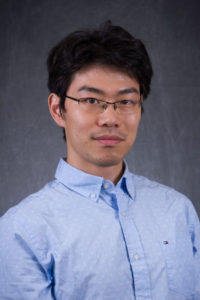 Yezhou Yang was attracted to ASU because he views it as “the ideal place” for opportunities to combine pursuits of both basic and applied research.
Yezhou Yang was attracted to ASU because he views it as “the ideal place” for opportunities to combine pursuits of both basic and applied research.
Yang’s expertise encompasses computer vision, humanoid robotics, cognitive robotics, robot perception and manipulation actions.
He has published more than 25 research papers in the fields of computer vision, robotics, artificial intelligence, natural language processing and multimedia, and has been the first author on papers in those and related fields that have been presented at top-tier science and engineering conferences.
His work has also been featured in MIT Technology Review, and he received Qualcomm Innovation Fellowship in 2011.
He has chaired and/or co-chaired two international workshops on Semantic Policy and Action Representations and Deep Learning for Autonomous Robots (DLAR).
Yang’s research focuses primarily on finding solutions to visual learning challenges.
“These solutions involve computer vision, deep learning and artificial intelligence algorithms to interpret and explain peoples’ actions, to observe the surrounding environment, and the scene’s geometry,” he explains. “My short-term goal is to significantly reduce the time it takes to program intelligent agents, in other words, robots.”
His interest in the fields in which he now does research was sparked by a C-programming course he took as a freshman at Zhejiang University in China.
“I developed a tiny class project, Gomoku (an abstract strategy board game) with a minimum artificial intelligence. I knew nothing about programming before that course,” he says, “but after the course I felt that computer science and engineering is something fantastic. That feeling has not only lasted but it has grown over the years.”
One of his major goals is to develop an interpretable, co-active and wearable system for visually understanding human actions.
“It would enable explainable human-robot collaboration and help users with minimum robotics knowledge to program and work with intelligent agents more efficiently,” he says.
Yang is teaching the computer and science engineering course Perception in Robotics.
He says his students should be prepared for technically challenging, hands-on class projects.
Away from the classroom and the laboratory, Yang says, “You may occasionally find me at the ASU gym or on sports fields playing pick-up basketball or soccer.”
Yu (Tony) Zhang, Assistant Professor
Ph.D., University of Tennessee, Knoxville
Read more
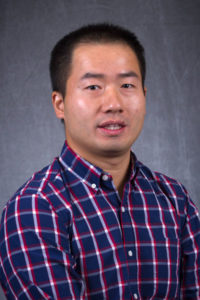 Yu (Tony) Zhang wants to create collaborative robotic systems to improve our daily lives.
Yu (Tony) Zhang wants to create collaborative robotic systems to improve our daily lives.
He uses his expertise in distributed robot systems, human-robot teaming, multi-agent planning and human-robot interaction to advance theories and practices for applications in artificial intelligence, robotics and automated and cyber-physical systems.
One project he is working on involves creating cognitive robots that model human knowledge, capabilities, intents and preferences, and use this information to interact with humans. These robots could have wide-reaching abilities and applications from our homes to outer space.
“Cognitive robots are able to interact efficiently with us to assist in our everyday lives, such as in smart homes and for elderly care,” Zhang says. “They can revolutionize ways to achieve tasks that lead to better human safety and security, such as in urban search and rescue missions and decision support systems, as well as enable futuristic applications, such as space exploration and colonization.”
He joins the Fulton Schools faculty as an assistant professor this academic year, but he’s not new to the university. In 2013 he arrived at ASU as a postdoctoral scholar and in 2015 he became an assistant research professor.
“I have been collaborating with many faculty members covering diverse research areas, supervising students at different levels and participating in numerous university activities,” Zhang says.
Zhang is looking forward to continuing his work with the ASU community.
“I have been very impressed by the professionalism and devotedness of the faculty members toward teaching and research, the inclusiveness of the mission of the university to popularize higher education as well as the diversity and enthusiasm of the student body,” he says.
Zhang brings a history of outstanding academic excellence to ASU. His achievements helped to earn him a full scholarship to support his studies and made him one of only 15 recipients of the University of Tennessee Chancellor’s Citation Awards given to engineering students in recognition of their extraordinary professional promise.
School of Electrical, Computer and Energy Engineering
Shamala Chickamenahalli, Professor of Practice
Ph.D., University of Kentucky
Read more
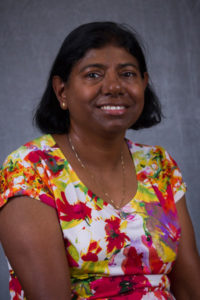 Prior to joining ASU, Shamala Chickamenahalli spent about 16 years at Intel, working on efficient and cost-effective power delivery methods to microprocessors.
Prior to joining ASU, Shamala Chickamenahalli spent about 16 years at Intel, working on efficient and cost-effective power delivery methods to microprocessors.
She brings a range of knowledge about power systems to ASU, and is particularly interested in researching ways of providing power wirelessly through inductor technologies.
“Making wireless power available anywhere, anytime, is an engineering challenge and one of the most critical and urgent problems to be solved,” says Chickamenahalli. “Providing the needed electric power in some form without the need of wires serves emergency situations, eliminates interruptions for people-to-people communication and eventually enhances people’s productivity.”
This semester, Chickamenahalli will be teaching CSE 120: Digital Design Fundamentals and EEE 202: Circuits I. She advises students in CSE 120 to approach the course with an open mind, as it entails lectures as well as both hardware and simulation labs. She cautions students to brush up on their algebra, calculus and complex algebra for EEE 202.
In addition to her research and teaching, Chickamenahalli is passionate about developing learner feedback tools for music students.
Her interest in music extends beyond creating engineering solutions. Chickamenahalli is trained in south Indian classical music and teaches children and community members in her spare time.
“Having taught music for more than a decade, enhancing adult student learning has been an intriguing topic,” she notes.
Robert LiKamWa, Assistant Professor
Ph.D., Rice University
Read more
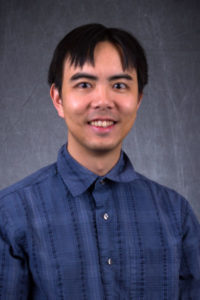 Robert LiKamWa is a big believer in the transformative nature of technology. So much so that he began studying engineering to aid in shaping the technology that changes cultures, presents new and exciting opportunities, and connects people from all over the world.
Robert LiKamWa is a big believer in the transformative nature of technology. So much so that he began studying engineering to aid in shaping the technology that changes cultures, presents new and exciting opportunities, and connects people from all over the world.
His research, which focuses on operating systems and computer architecture for low-power mobile systems, similarly draws motivation from the ever-shifting nature of technology.
“As the ways in which we use our devices continue to change, possibilities for innovation continue to present themselves,” says LiKamWa. “These opportunities spawn clever solutions from the mobile systems research community, which continually inspires me to work in this area.”
Currently, LiKamWa’s main research thrust is developing low-power mobile sensing for computer vision tasks to allow computers to efficiently see and interpret things, providing visual aid, memory assistance and gesture recognition.
“This may find real-world application in assistive technology for the visual- or memory-impaired, active localization for rover or drone deployments and immersive augmented reality on consumer mobile devices,” says LiKamWa.
This semester, LiKamWa will continue to teach the course Mobile Systems Architecture, which presents students with an overview of the software and hardware that comprise tablets and smartphones.
“Students should be prepared to explore a broad set of topics, including memory management, power management, sensor stacks, graphics pipelines and security in mobile operating systems and computer architectures,” says LiKamWa.
LiKamWa says it was the innovative work from Fulton Schools faculty that attracted him to ASU, and he hopes to build deep collaborations and explore cutting-edge research opportunities. He’s also eager to join the School of Arts, Media and Engineering, where he can explore the cultural implications of the application of research technologies.
Angelia Nedich, Professor
Ph.D., Massachusetts Institute of Technology
Read more
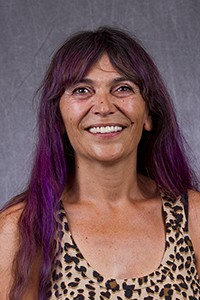 Angelia Nedich left the University of Illinois at Urbana-Champaign where she was an associate professor and the Donald Biggar Willett Scholar to help lead ASU on its path to excellence in education and research.
Angelia Nedich left the University of Illinois at Urbana-Champaign where she was an associate professor and the Donald Biggar Willett Scholar to help lead ASU on its path to excellence in education and research.
Nedich’s area of expertise is in mathematical models, optimization theory and algorithms for engineering applications in signal processing, control and networked systems.
At ASU, Nedich will focus her research on distributed large scale systems for information processing.
“In my group, our goal is to design efficient and scalable methods with provable performance guarantees,” she says.
Among several topics she is currently investigating are some complex dynamics in multi-agent systems. These dynamical models are considered for applications in sensory and robotic systems.
“One of the questions we are interested in is characterizing their complexity and performance limits,” she says. “These are important for the envisioned sensory systems that will be controlling power and traffic systems.”
Students in her classes should be prepared for a heavy use of mathematics, including analysis, algebra and probability theory. She says that a solid grasp of these basic disciplines is important, as they are fundamental for the learning of more complex concepts that she will be covering.
Nedich has always liked mathematical problems and enjoyed the various stages of learning involved in finding a solution. She says that this somewhat naturally lead to her working in the optimization area within engineering.
“The technology is constantly changing, posing new challenges, which creates new problems that need solutions,” she says. “The joy of learning and searching for the answers keeps me in.”
Anamitra Pal, Assistant Professor
Ph.D., Virginia Tech
Read more
A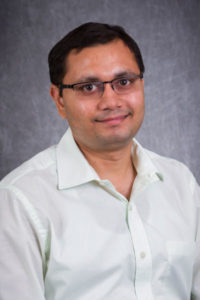 namitra Pal describes his “ultimate desire” as “working to keep society’s ‘lights on,’ 24 hours a day, 365 days a year, for all years to come.”
namitra Pal describes his “ultimate desire” as “working to keep society’s ‘lights on,’ 24 hours a day, 365 days a year, for all years to come.”
After earning master’s and doctoral degrees in electrical engineering and serving as an applied electrical and computer scientist — all at Virginia Tech — Pal joined ASU in August 2016.
His research interests include data mining, power system and energy modeling, small-signal stability/control, and monitoring and protection using wide-area measurements.
“The primary focus of my research is on developing wide-area measurement-based applications that can improve the monitoring, protection and control of the power systems of the future,” says Pal.
Currently, he is expanding PMU-based applications inside the power system domain. Pal refers to PMU — phasor measurement unit — devices as the backbone of any wide-area measurement system.
“I am trying to understand the nature of the errors that are present in these devices so as to devise techniques that will minimize those errors,” says Pal. He will then use the corrected measurements obtained from these devices to address engineering problems, including effective integration of renewable energy and enhancement of grid resiliency to cyber-physical attacks.
“The number of PMUs in the power system is doubling every few years,” says Pal. “The more familiar one gets with this technology, the better prepared one will be to solve the problems of the future.”
In fall 2016, Pal taught EEE 360: Introduction to Energy Systems and Power Electronics. This spring he is teaching a mixed undergraduate and graduate level course called Power System Analysis.
“Power and energy systems is one of the evergreen areas of engineering because the more advanced we get, the more dependent we become on the electrical grid. It is the thought of making the electric grid more robust and secure that keeps me going,” says Pal.
When he doesn’t have power systems on his mind, he enjoys playing table tennis, hiking and swimming.
Chao Wang, Assistant Professor
Ph.D., Princeton
Read more
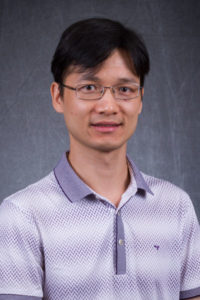 After several years in research for the IBM T.J. Watson Research Center, Chao Wang decided to return to academia, choosing to make the move to ASU because the Fulton Schools and the Biodesign Institute have “many excellent faculty members I can collaborate with who are working on a wide spectrum of cutting-edge research,” he says.
After several years in research for the IBM T.J. Watson Research Center, Chao Wang decided to return to academia, choosing to make the move to ASU because the Fulton Schools and the Biodesign Institute have “many excellent faculty members I can collaborate with who are working on a wide spectrum of cutting-edge research,” he says.
Wang’s expertise is in nanofabrication, nanofluidics, plasmonics and biosensing. He has 16 granted or pending U.S. patents and two recent publications in the prominent research journals Nature Nanotechnology and Nature Communications.
A major focus of his research is developing scalable nanomanufacturing methods by combining wafer-scale nanoimprint lithography and self-assembly to create functional nanostructures for energy, health and security-related applications.
Another focus area is developing complex three-dimensional nanofluidic systems for controlled manipulation and high-sensitivity detection of biomolecules, including DNA.
He also studies nanophotonic phenomena in engineered metamaterials for the purpose of generating and detecting light that can be used for sensing, information storage and communication.
“I am interested in making functional devices that can have an impact on our lives,” Wang says. “I started my research at Princeton in nanoscale engineering and found it very interesting because there are plenty of new things in many fields waiting to be discovered.”
Another goal is “applying what I can do at nanoscale to biomedicine, and for this reason I am interested in combining nanofluidic, nanophotonic and nanoelectric approaches to probe sub-cellular contents that can serve as biomarkers for human health monitoring and disease diagnosis,” he says.
Wang will resume his teaching in the fall semester in a new course, Nanobiotechnology: from Nanoscience to Biomedicine.
Beyond his professional pursuits, Wang likes to play basketball.
Yang Weng, Assistant Professor
Ph.D., Carnegie Mellon University
Read more
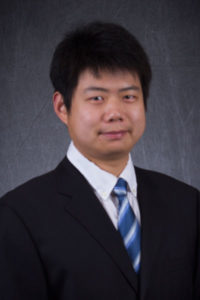 Yang Weng is working to make the global power system greener, more efficient and more reliable — a challenge that comes from both sides of the power equation.
Yang Weng is working to make the global power system greener, more efficient and more reliable — a challenge that comes from both sides of the power equation.
On the generation side, Weng says annual solar installations have grown from 850 megawatts five years ago to more than 8,000 megawatts in 2015, with growth expected to triple in the next few years. On the demand side, Weng says demand response program growth in the global market is predicted to increase tenfold.
“To realize these goals, we have to overcome a new set of challenges,” Weng says. “Problems such as real-time distribution grid monitoring, efficiently controlling generation and demand resources, reliability and reducing standby reserves are critical to the realization of a smart grid.”
Weng’s expertise of power systems, machine learning, mathematical optimization and signal processing are well-suited to helping achieve these power goals, and he says ASU was the place to go.
“ASU has one of the strongest electric power system groups in the U.S. and I found my machine learning background complements the current research in this group,” he says.
Long before coming to ASU, Weng noticed analysis through modeling is game changing. As a child, Weng loved space exploration, and he saw how model-based analysis was key to successful space exploration in the last century. This century, more complex model-based analysis and data-driven analysis from cell phones and sensors are key to breakthrough engineering in fields such as power systems.
Weng has won four best paper awards in the last five years at notable conferences, and his work has also been recognized by a fellowship with technology firm ABB.
This semester, Weng is teaching EEE 202: Circuits I. He says students in this class to be prepared for mathematical calculus and field engineering applications.
When he’s not researching and teaching about power systems, Weng enjoys biking.
School for Engineering of Matter, Transport and Energy
Luis Bocanegra, Professor of Practice
Ph.D., West Virginia University
Read more
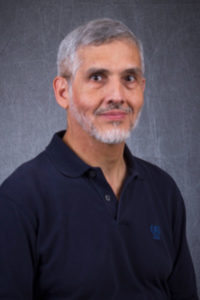 Luis Bocanegra has become a full-time faculty member after two years in a part-time teaching role as a faculty associate with the Fulton Schools. He says positive experiences with students over those years made him want to do more to share what he has learned in a long and varied career in industry.
Luis Bocanegra has become a full-time faculty member after two years in a part-time teaching role as a faculty associate with the Fulton Schools. He says positive experiences with students over those years made him want to do more to share what he has learned in a long and varied career in industry.
He recalls that as a youngster he was fascinated by “the relationship between cause and effect. I always had a natural curiosity about how things work, and what could make them work better,” he says.
He would eventually satisfy that curiosity by becoming an engineer and working in thermal systems design, product development and high-volume manufacturing process improvement.
His efforts led to being awarded eight U.S. patents and bringing seven new products from concept and prototype to manufacturing and then into the marketplace.
Bocanegra is teaching a Thermal System Design course — a mechanical engineering capstone project design course with an energy and environment focus.
He’s also teaching the Engineering Profession course that is considered to be the bridge between studying engineering and working as an engineer.
The course aims to prepare senior students for their transition to the engineering workplace. It presents special topics ranging from resume writing, job interviews, leadership and teamwork to project management, contemporary issues in engineering, intellectual property laws, corporations, project preparation and key aspects in the manufacturing and supply chain.
He advises students taking his courses to consider their academic activities as part of their job, and he encourages everyone to come to class well prepared and ready to be actively involved in class sessions.
Students should be in the classroom before class starts, he says, and should have reviewed material covered in the previous class meeting and prepared any questions they have about the material.
They also should have read in advance the material to be covered in each class session and be ready to share with classmates what they’ve learned.
Outside of his teaching work, Bocanegra likes to spend time hiking, camping and traveling, doing photography and playing tennis.
Srinivas Kosaraju, Lecturer
Ph.D., Florida State University
Read more
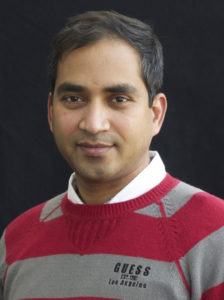 Srinivas Kosaraju has applied his background in mechanical engineering and expertise in engineering design, optimization, microchannels, thermal management and renewable energy to a wide variety of topics.
Srinivas Kosaraju has applied his background in mechanical engineering and expertise in engineering design, optimization, microchannels, thermal management and renewable energy to a wide variety of topics.
His recent research includes a robotic acoustic device used to examine the human eardrum, the design and modeling of artificial leaves using single monomolecular layer graphene oxide, and gravitational micro-lensing of galaxies in collaboration with astronomers at Lowell Observatory in Flagstaff, Arizona.
Kosaraju completed his doctorate in mechanical engineering at Florida State University in 2009. Afterward, he worked as a postdoctoral researcher at the university’s Center for Advanced Power Systems laboratory, and taught classes in mechanical engineering including dynamics, thermodynamics, heat transfer and engineering design methods.
He then moved to Northern Arizona University’s Department of Mechanical Engineering as a lecturer, where he continued to teach mechanical engineering classes to sophomores, juniors and seniors as well as oversaw capstone senior design projects. There he mentored more than 500 senior students while he worked on more than 100 design projects, including 20 interdisciplinary projects.
In fall 2016, Kosaraju joined ASU as an aerospace engineering lecturer in the School for Engineering of Matter, Transport and Energy.
He sees teaching at ASU as a wonderful experience due to its diversity of students, faculty and opportunity.
“I get to teach students with diverse backgrounds including their nationalities, communication levels, previous knowledge, problem-solving skills and preparations.” Kosaraju says. “My colleagues at ASU are some of the world’s finest and this gives me an opportunity to pursue a wide range of research interests and collaborate on multiple research endeavors.”
This semester he is teaching MAE 212: Engineering Mechanics and MEE 323: Computer-Aided Engineering II.
Qiong (Eric) Nian, Assistant Professor
Ph.D., Purdue University
Read more
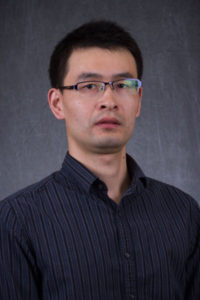 Qiong (Eric) Nian is an expert in laser-based advanced manufacturing and materials processing, large scale thin film manufacturing, renewable energy device fabrication and manufacturing, and additive manufacturing and 3D printing.
Qiong (Eric) Nian is an expert in laser-based advanced manufacturing and materials processing, large scale thin film manufacturing, renewable energy device fabrication and manufacturing, and additive manufacturing and 3D printing.
He earned his doctorate in industrial engineering from Purdue University in 2015, and then served as a research associate in industrial engineering at the university.
Nian was also a member of the roll to roll manufacturing and smart printing team at Purdue University’s Birck Nanotechnology Center.
There, beginning in August 2015, his team led a $13 million component of the five-year U.S. Department of Defense effort to launch the Flexible Hybrid Electronics Manufacturing Innovation Institute. They aimed to examine how to enable low-cost fabrication, including roll to roll manufacturing, inkjet/pulsed laser processing of printable nano-ink synthesis, flash light curing and sintering systems, with applications in smart food packaging, flexible connectors, and supercapacitors and sensors.
Nian also enjoys delving into his own research projects in 2D/3D multifunctional printing and laser-based manufacturing.
This semester at ASU, Nian is teaching graduate-level mechanical and aerospace engineering special topics and research courses.
Jay Patel, Lecturer
Ph.D., Arizona State University
Read more
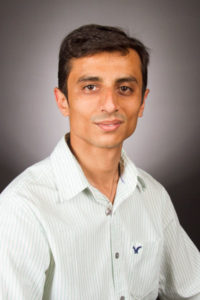 After attaining his master’s degree in aerospace engineering from Embry-Riddle Aeronautical University in 2010, Jay Patel came to ASU to pursue his doctorate. He was drawn by ASU’s approach to academics and research, which he believes “enables students to think logically and critically about solving real world problems in engineering practice.”
After attaining his master’s degree in aerospace engineering from Embry-Riddle Aeronautical University in 2010, Jay Patel came to ASU to pursue his doctorate. He was drawn by ASU’s approach to academics and research, which he believes “enables students to think logically and critically about solving real world problems in engineering practice.”
Now, as a lecturer, he hopes to leverage the same approach to help shape students into professional engineers.
“Reflecting to my past experience at ASU as a graduate teaching associate, particularly in the solid mechanics course, the assignments and material I covered in class ensure that students recognize the connection between the classical problem solving methods and the substantive problems they are trying to understand through their own research and readings in other courses,” says Patel, who received an Outstanding Research Award during his doctoral work by ASU’s Graduate and Professional Student Association.
Patel’s area of expertise lies in solid and structural mechanics, as well as computer-aided engineering.
This semester, he will be teaching the courses MAE 213: Solid Mechanics, AEE 325: Aircraft Structures/Materials and MAE 214: Computer Aided Engineering. For MAE 213, Patel advises that students are prepared with an understanding of statics and dynamics, and notes that students with knowledge of solid mechanics generally excel in AEE 325.
Patel adds that teaching a computer aided design course is also rewarding.
“The course content and the design methods covered in class lead students to enrich their mechanical aptitude skills, which is a precursor to upper division design classes and research projects,” he says.
Sze Zheng Yong, Assistant Professor
Ph.D., Massachusetts Institute of Technology
Read more
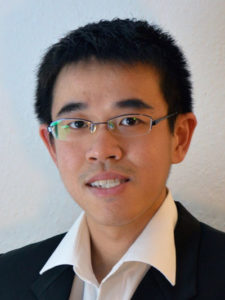 Sze Zheng Yong came to ASU with the hope that there would be room for innovation and improvement, as well as a path to make a lasting impact.
Sze Zheng Yong came to ASU with the hope that there would be room for innovation and improvement, as well as a path to make a lasting impact.
In fact, the desire to make a difference is what led him to engineering in the first place.
“My interest in engineering stems from my desire to come up with something impactful that has not been done before, and I have always had a penchant for applied math,” Yong says.
An expert in system dynamics and control as well as robotics, Yong’s research revolves around the control and estimation of complex system with hybrid dynamics.
“My curiosity and my continued passion for something new keep me interested in my field that is constantly pushing the boundaries of what is possible,” Yong says.
This semester, Yong will be teaching MAE 318: System Dynamics and Control. He chose the subject because its general principles can be applied to a range of different disciplines — from mechanical and electrical systems to economic and financial systems.
“In the future, I hope to teach more advanced control and estimation courses, including topics on adaptive, robust and hybrid systems,” says Yong.
He advises students taking his classes should be comfortable with math, and have a solid understanding of calculus, linear algebra and basic control theory.
In his free time, Yong enjoys playing racket sports such as tennis and table tennis. He also enjoys puzzle hunts, like the MIT Mystery Hunt put on every year by his alma mater.
School of Sustainable Engineering and the Built Environment
Treavor Boyer, Associate Professor
Ph.D., University of North Carolina at Chapel Hill
Read more
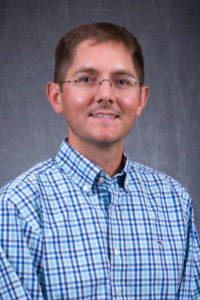 An expert in drinking water and wastewater treatment, Treavor Boyer joined the School of Sustainable Engineering and the Built Environment as an associate professor in July 2016.
An expert in drinking water and wastewater treatment, Treavor Boyer joined the School of Sustainable Engineering and the Built Environment as an associate professor in July 2016.
Boyer is currently leading the creation of the Fulton Schools’ new environmental engineering undergraduate program, and will direct this program through his role as program chair.
His research is broadly focused on water sustainability, and spans drinking water and wastewater treatment, and water quality in natural systems.
His engineering passion is to develop robust approaches to the treatment of water at various stages in its life cycle so as to maximize water conservation, recover valuable materials, sequester harmful contaminants, minimize the production of waste byproducts and advance the water-energy-food nexus.
He strongly supports taking a systems-thinking approach to water quality and treatment that considers global drivers such as urbanization, climate change, biogeochemical cycles, sustainable engineering and disruptive innovation.
In 2012, he earned a National Science Foundation CAREER award for his efforts toward using urine separation and treatment as catalysis for new research directions in the water life cycle.
Other examples of research projects include studying innovative ion exchange treatment and regeneration for small drinking water systems and research on the impacts of sea-level rise and saltwater intrusion on drinking water treatment and disinfection.
Boyer says he is excited to be to “be part of the New American University experiment” championed by ASU.
“I find the principles of the New American University to be truly inspiring and they help me to think holistically about my teaching, research and service,” he says.
Before joining ASU, he was an Associate Professor in the Department of Environmental Engineering Sciences at the University of Florida, where he earned his bachelor’s degree in chemical engineering. Boyer earned his master’s and doctoral degrees in environmental engineering from the University of North Carolina at Chapel Hill.
His hobbies and interests include running, hiking, spending time outdoors with his family and walking his dogs, Sandy and Duke.
Christian Hoover, Assistant Professor
Ph.D., Northwestern University
Read more
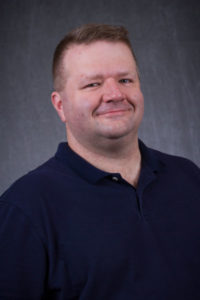 Christian Hoover comes to ASU from the Massachusetts Institute of Technology’s Department of Civil and Environmental Engineering, where he worked as a postdoctoral researcher for about four years.
Christian Hoover comes to ASU from the Massachusetts Institute of Technology’s Department of Civil and Environmental Engineering, where he worked as a postdoctoral researcher for about four years.
Prior to his time at MIT, Hoover earned his doctoral degree at Northwestern University in 2012, studying the dependence of a structure’s strength on its size.
His current research focus has been translating material fracture behavior at nano-, micro- and macroscale into improved structural performance relevant for many civil engineering applications.
Hoover hopes to bring ideas from various fields together and apply them to smart and active materials that serve important functions in society.
Hoover has published 15 articles in journals such as Engineering Materials and Technology, Engineering Fracture Mechanics and the International Journal of Fracture.
In addition to his research work, Hoover has experience teaching as an adjunct professors and a teaching assistant for both undergraduate- and graduate-level courses.
This semester Hoover is teaching CEE 598, a special topics course.
Giuseppe Mascaro, Assistant Professor
Ph.D., Università di Cagliari, Italy
Read more
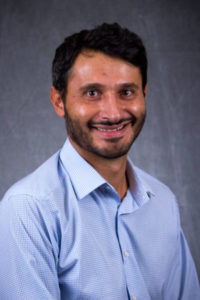 An interest in studying water systems led Giuseppe Mascaro to the Arizona desert.
An interest in studying water systems led Giuseppe Mascaro to the Arizona desert.
He moved from Italy to ASU in 2012 for a position as a research engineer, and this academic year he joined the Fulton Schools faculty. Mascaro’s expertise in hydrology and water resources helps to solve fundamental engineering challenges.
“My research group is investigating a range of topics in hydrology, climate and atmospheric sciences that are useful to support engineering applications,” Mascaro says, adding that they focus on statistical characterization of hydrologic variables, development of downscaling methods, watershed modeling, evaluation of climate change impacts on water resources and infrastructure and the food-water-energy nexus.
He is currently working on a project involving advanced statistical techniques and the statistical characterization of precipitation properties and their extremes in the Phoenix area.
“I hope that this work will help improve the design and operation of civil infrastructures, and planning of water resources in our desert region,” he says.
Mascaro hopes to work in multidisciplinary collaborations with his colleagues at ASU to expand his views and produce significant interdisciplinary contributions, papers and awards.
Since middle school, Mascaro has been interested in mathematics and physics, and was intrigued by the work done at his uncle’s engineering consulting firm — a connection that prompted him to choose a civil engineering path in college. He was later introduced to the concentration of hydraulics, hydrology and water resources by a friend.
“This is a great field with opportunities at local, regional and global levels that always keeps me interested,” Mascaro says.
Mascaro teaches CEE 441: Water Resources Engineering. He says students enrolled in this course should be prepared to apply the theoretical concepts they learned in Fluid Mechanics to design water infrastructure.
Outside of his work as a civil engineer, Mascaro enjoys cooking and playing basketball, a sport he played for more than 15 years on different teams in Italy.
Ram Pendyala, Professor
Ph.D., University of California, Davis
Read more
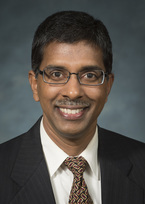 Ram Pendyala has returned to ASU after two years at the Georgia Institute of Technology to resume work he began at ASU in 2006 that has made him an internationally recognized leader in transportation engineering.
Ram Pendyala has returned to ASU after two years at the Georgia Institute of Technology to resume work he began at ASU in 2006 that has made him an internationally recognized leader in transportation engineering.
He has most recently become the director of a new U.S. Department of Transportation Tier 1 University Transportation Center based at ASU that aims to bring innovative planning methods and data analytics to design future enhancements for the nation’s transportation systems.
The new center, called the Center for Teaching Old Models New Tricks, puts Pendyala in charge of a consortium that includes researchers at the Georgia Institute of Technology, the University of Washington and the University of South Florida.
The center’s activities will enable Pendyala to expand on his pioneering research in advancing the science and practice of transportation demand modeling. His expertise in this area and related fields have made him a sought-after adviser on transportation infrastructure planning in the United States as well as abroad.
Pendyala’s research efforts have been supported by a number of grants awarded by the U.S. DOT. These research projects have resulted in the development of new open source tools and mobility analytics for better forecasting travel demand under alternative futures.
Pendyala has conducted research to develop tools that enable a robust evaluation of the performance of light rail lines and extensions, a comprehensive assessment of the impacts of dynamic mobility management and pricing strategies, and accurate predictions of the impacts of connected and autonomous vehicles on travel demand and network congestion. Methods and tools he has developed are helping agencies around the country better plan and design multimodal surface transportation systems.
Pendyala teaches an introductory course in transportation engineering at the undergraduate level and more advanced travel demand modeling courses at the graduate level. He also teaches a graduate level course on transportation data collection and analysis methods.
Pendyala is a recognized leader in the field and has held a number of key leadership positions in the profession.
He is currently the Planning and Environment Group Chair of the Transportation Research Board, a unit of the National Academies. He previously served as the chair of the International Association for Travel Behaviour Research, an international organization of scholars and academics dedicated to fostering research in travel analysis methods.
Leon van Paassen, Associate Professor
Ph.D., Delft University of Technology, The Netherlands
Read more
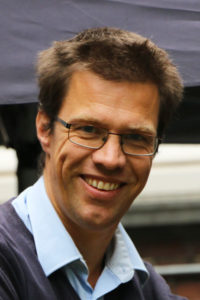 Leon van Paassen comes to Arizona State University from Delft University of Technology in the Netherlands where he was an assistant professor.
Leon van Paassen comes to Arizona State University from Delft University of Technology in the Netherlands where he was an assistant professor.
The chance to work at ASU was one he says he couldn’t pass up.
“Although I already I had a tenured position in Delft, I still decided to move as it seemed to me a once in a lifetime opportunity,” he says.
At ASU, van Paassen will conduct research in the Center for Bio-mediated and Bio-inspired Geotechnics. He says he will be investigating how biochemical processes affect the properties of soils for engineering applications.
“By creating knowledge and awareness about natural processes through which all the elements on earth are recycled, I aim to develop new solutions to improve sustainability of civil and mining engineering practice.”
He will begin teaching in spring semester, where he will give some lectures on bio-based geotechnics, an area in which he will develop a new graduate-level course. In the fall, he says he will probably start teaching an undergraduate course in engineering geology.
“My experience is that the best way of learning is interactive learning, which means I work a lot with assignments and projects,” van Paassen says. “I regularly do demonstrations or experiments in class, but also I like to organize excursions to experience geology and associated engineering challenges in the field.”
The 2009 winner of the Young Geotechnical Engineer Award from the International Society for Soil Mechanics and Geotechnical Engineering says the reason he started in the field of engineering is that he likes to apply his knowledge in practice.
“Since I decided to start a doctoral degree, combining environmental biotechnology and geotechnical engineering, I have not been bored a single day,” he says.
The Polytechnic School
Bruno Azeredo, Assistant Professor
Ph.D., University of Illinois at Urbana-Champaign
Read more
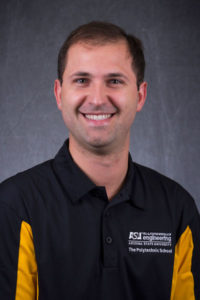 In his early engineering training, Bruno Azeredo says he became interested in making structures and materials that the world has never produced before.
In his early engineering training, Bruno Azeredo says he became interested in making structures and materials that the world has never produced before.
This led to an interest in the manufacturing processes employed in large-scale production of these structures, specifically in nanoscale smart materials and devices.
Azeredo joins the Fulton Schools faculty after earning his doctorate in mechanical engineering at the University of Illinois at Urbana-Champaign, where he also earned his master’s degree in theoretical and applied mechanics and bachelor’s degree in engineering mechanics.
As a doctoral student he worked in the Nano-Micro Manufacturing Lab. He also earned a National Science Foundation Graduate Research Fellowship and the James O. Smith Outstanding Teaching Assistant Award.
Now an assistant professor in manufacturing engineering within the Polytechnic School, Azeredo’s research focuses on the use of self-assembly processes and electrochemical methods for scaling the production of nanostructured inorganic semiconductors such as silicon.
He strives to provide manufacturing solutions that are large scale and economically viable for future technology transfer.
“Currently, key challenges prevent scalable and low-cost processing of nanostructured silicon such as high defect density, low-dimensionality in geometrical control and low-throughput,” says Azeredo, adding, “In my research, I’ve developed a novel imprinting platform to directly pattern porous silicon and single-crystal silicon that makes progress towards addressing these challenges.”
The benefits of this research could boast improvements in the performance of lithium-ion batteries, bio-imaging systems and bio-integrated electronics, micro-optical elements for silicon photonics and thermoelectric energy harvesting.
“To bring these applications into commercial development, my research may help scale manufacturing of silicon from micrograms to kilograms in an economical and sustainable fashion,” says Azeredo.
He is also interested in pursuing research concerning the intersection of STEM and the arts, in particular music and dance, at the undergraduate and K-12 level.
Azeredo says he was attracted to ASU because of the “excellent interface between industry and academia” and the “large infrastructure provided for engineering research.”
He was also impressed by the Fulton Schools’ growing investment in manufacturing and engineering education research.
“During my interviews, I got the impression that folks at ASU are ready for whatever is next,” says Azeredo.
In his spare time, he enjoys soccer, meditation, tango dancing, hiking, organic food and cooking.
Yan Chen, Assistant Professor
Ph.D., The Ohio State University
Read more
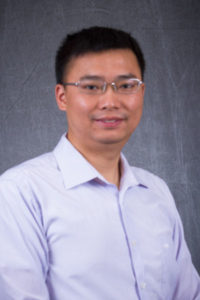 Yan Chen says he saw an “excellent environment” at ASU for integrating his experience in industry research into his pursuit of academic research goals, plus a chance to use that experience to enhance development of academic programs in the Fulton Schools.
Yan Chen says he saw an “excellent environment” at ASU for integrating his experience in industry research into his pursuit of academic research goals, plus a chance to use that experience to enhance development of academic programs in the Fulton Schools.
His expertise is in vehicle dynamics and control. Since 2015 he has been an associate editor for the American Control Conference, as well as an associate editor for American Society of Mechanical Engineers Dynamic Systems and Control Conference.
In 2016 he was elected session organizer for the ASME Automotive & Transportation Systems Technical Committee.
His research interests focus primarily on design, modeling, estimation, control and optimization of dynamic systems, specifically for electric/hybrid ground vehicles, internal combustion engines, after-treatment, energy, nano manipulation and nano manufacturing, and mechatronic systems.
“I hope to make vehicles safer, more efficient and more agile through my automotive engineering research,” Chen explains.
“I like to develop technologies guided by science that can really be applied to our everyday life,” he says. “Automotive engineering is a very challenging and interesting area that is undergoing a revolution, for example, with electric cars and autonomous cars. My theoretical background on control and optimization can be fully utilized to advance the technology and the application of the new technologies in these areas,” he says.
In particular, Chen wants to overcome the technical hurdles to improving control and optimization of over-actuated electric or autonomous vehicles.
“That will help to enhance the agility, safety and efficiency of autonomous ground vehicles,” he says.
In the spring semester he is teaching two courses, Principles of Systems Engineering and Vehicle Dynamics and Control. The courses will challenge students to apply the theory they learn in class to solving real engineering problems.
When not involved in teaching and research, Chen plays sports such as soccer and basketball, and likes to compete in the strategy board game Go.
Erin Chiou, Assistant Professor
Ph.D., University of Wisconsin-Madison
Read more
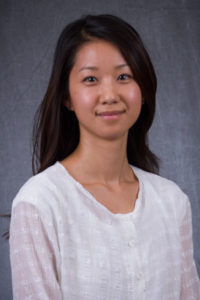 Following her passion to answer difficult questions about people and society, Erin Chiou doubled-majored in psychology and philosophy as an undergraduate. What she learned in both of those disciplines gave her valuable insight for the research she does today.
Following her passion to answer difficult questions about people and society, Erin Chiou doubled-majored in psychology and philosophy as an undergraduate. What she learned in both of those disciplines gave her valuable insight for the research she does today.
“My undergraduate majors turned out to be a great foundation for my current interests — studying how people work, how to improve work systems and the role of technology in our lives,” she says.
After working in the private sector, she returned to graduate school for a doctorate in industrial and systems engineering, which allowed her to focus on human factors. She now studies how people coordinate with technology.
“Few researchers have looked at the social factors that might influence coordination with technology as it becomes increasingly pervasive and autonomous,” Chiou says.
To this end, she studies relational trust, accountability and cooperation, with the goal of understanding how much these factors influence performance of joint human-technology systems — for example, how people might use or disuse a robotic decision aid.
Graduate students can take her PSY 560: Advances/Theoretical Psych seminar class on human-automation interaction and HSE 598: Data Analytics, a course that focuses on wrangling, visualizing and analyzing human subjects data in the R programming language. Chiou says students should be ready for classes with a lot of active, hands-on participation.
“I believe in learning through hands-on practice, so my classes will rarely feature long lectures or cumulative exams,” she says.
Chiou is excited to be part of the Fulton Schools’ Human Systems Engineering program, one of the first of its kind in the United States.
“I wanted to be a part of shaping this new program, and I was lucky that the timing was right for me,” Chiou says. “I wish this program had been around when I was applying to graduate schools.”
When she’s not conducting research or teaching, Chiou enjoys dancing and bird watching.
H. John DeLugt, Lecturer
B.A., Arizona State University
Read more
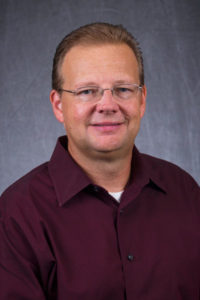 John DeLugt graduated from ASU in 1989 with a bachelor’s degree in political science and had planned to go to law school.
John DeLugt graduated from ASU in 1989 with a bachelor’s degree in political science and had planned to go to law school.
Instead, he says, “I wound up taking an entrance exam to be an air traffic controller.”
He passed the exam and was offered a spot at the Federal Aviation Administration Academy in Oklahoma City. He then made it through the FAA screening process and was assigned to the agency’s Los Angeles center about 40 miles from the city in Palmdale, California.
DeLugt worked there for 25 years for an en route air traffic control facility before returning to Arizona to retire. Soon after settling in Chandler, he heard the Polytechnic School’s Air Traffic Management program was in need of an instructor with experience in en route control.
En route controllers ensure the separation of airborne aircraft, work the departures from airports and space out the aircraft arrivals at airports.
He is teaching the courses En Route Operations, En Route Operations and Procedures (a lab course) and Non-Radar Operations and Procedures.
“What motivates me to teach is that the need for a highly motivated and educated workforce in the field is at an all-time high, and I want to share my knowledge and love for the profession with the next generation of air traffic controllers,” he says.
DeLugt promises his students in-depth coverage of the history of air traffic control, along with extensive education about the equipment used in the field and air traffic control procedures.
Students will learn “all the rules and regulations they can expect to use in the field, and how to speak like a controller,” he says.
Laura Hosman, Assistant Professor
Ph.D., University of Southern California
Joint appointment with ASU’s School for the Future of Innovation in Society
Read more
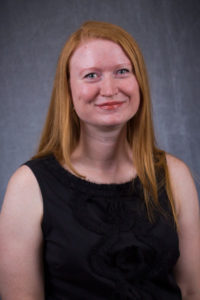 After years of studying the role of information and communications technology in developing countries, Laura Hosman decided to get involved.
After years of studying the role of information and communications technology in developing countries, Laura Hosman decided to get involved.
Armed with knowledge of the unique educational needs of developing nations, Hosman developed SPELL — or Solar Powered Educational Learning Library. The device is a digital library that uses an offline mobile Wi-Fi hotspot to deliver thousands of books, videos and other educational content to users.
It’s that same desire to get involved that brought Hosman to ASU in the first place.
“At previous schools, we have so much theory and we don’t always get our hands busy,” she says. “So I like facilitating that. Whenever I bring students into the field to see their work through to fruition, it’s a life changing experience.”
Hosman and a group of ASU students and faculty recently returned from Tonga to train U.S. Peace Corps volunteers in the use of SPELL, which came loaded with content curated for the island nation. To date, Hosman has led multiple teams to bring more than 100 of the solar-powered libraries to Vanuatu, the Federated States of Micronesia and Samoa.
This semester, Hosman will be teaching EGR 317: Humanitarian Engineering Projects II, a hands-on, team-focused, project-based course. One of the projects students will focus on is SPELL.
The best advice she has for students taking these classes is to be open to working with people from other disciplines, backgrounds and cultures.
“If we want to address complex problems facing the real world, we will need the input and contributions of numerous people with diverse skill-sets and areas of expertise: it takes a team!” she says.
Given the globe-spanning nature of her work, Hosman loves to travel. She’s been to more than 50 countries and loves to learn about different places all over the world.
Darshan Karwat, Assistant Professor
Ph.D., University of Michigan
Joint appointment with ASU’s School for the Future of Innovation in Society
Read more
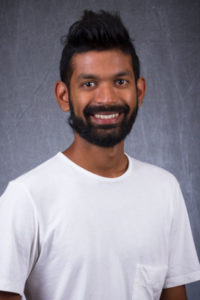
Darshan Karwat brings his expertise in renewable energy, climate change, social justice and environmental policy to ASU in a joint appointment with ASU’s School for the Future of Innovation in Society and the Polytechnic School within the Fulton Schools.
He is interested in interdisciplinary research in the interaction of renewable energy, climate change and social justice, and is also interested in space systems, engineering and peace, and trash and consumerism.
Karwat previously worked at the U.S. Department of Energy (DOE) as an American Association for the Advancement of Science (AAAS) Science and Technology Policy Fellow. In the Wind and Water Power Technologies Office at the DOE he served as technical lead on the Wave Energy Prize, a public prize competition with the aim of creating wave energy converters (WECs, devices that use the motion of ocean waves to generate electricity) that double the state-of-the-art performance. The prize was designed to increase the diversity of organizations involved in WEC technology development and shed a spotlight on this emerging renewable energy technology.
Before joining DOE, he was a AAAS Fellow at the U.S. Environmental Protection Agency as part of the Innovation Team in the Office of Research and Development. There he focused on community-based efforts for low-cost air pollution sensors and climate change resilience.
Karwat’s doctorate in aerospace engineering and sustainability ethics focused on the intersection of the combustion chemistry of biofuels and engineering activism.
During his studies, he was the co-founder of the University of Michigan’s Student Sustainability Initiative, which was aimed at guaranteeing long-term funding for sustainability efforts in construction, zero-waste sporting events, establishing an office of sustainability and administrative-level sustainability positions at the university as well as incorporating sustainability into curricula and engaging students in sustainable behavior.
This semester at ASU Karwat is teaching an interdisciplinary course called Climate Change, Energy, and Social Justice to undergraduate and graduate students.
Thaddeus Miller, Assistant Professor
Ph.D., Arizona State University
Joint appointment with ASU’s School for the Future of Innovation in Society
Read more
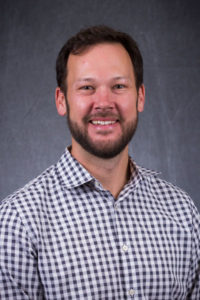 Sun Devil alumnus Thaddeus Miller joins ASU as an assistant professor with a joint appointment in the School for the Future of Innovation in Society and the Polytechnic School.
Sun Devil alumnus Thaddeus Miller joins ASU as an assistant professor with a joint appointment in the School for the Future of Innovation in Society and the Polytechnic School.
He completed his doctoral degree in sustainability at ASU in 2011. After graduation, he joined the faculty at Portland State University and taught courses in urban civic ecology.
His research explores how sustainability is interpreted, contested, materialized and settled in science and technology policy and infrastructure design. He is interesting in environmental ethics, socioecology, science policy and sustainability education.
In many ways, his work is motivated by his desire to use scientific research to solve problems that directly benefit society.
His recent book, Reconstructing Sustainability Science: Knowledge and Action for a Sustainable Future, part of the Earthscan Routledge Science in Society Series, examines how scientists can navigate epistemic and normative tensions to link knowledge to social action.
He is also on the Executive Management Team for the National Science Foundation-funded Urban Resilience to Extremes Sustainability Research Network, and co-PI of the NSF-funded STIR Cities project.
Robert Rucker, Lecturer
Ph.D., Arizona State University
Read more
 Robert Rucker combines academic and professional experience to help his software engineering students be successful.
Robert Rucker combines academic and professional experience to help his software engineering students be successful.
After graduating from ASU with a doctorate in industrial engineering, he taught for a while, set out to work in industry, and then returned to doing what he loves — working with students.
Rucker found engineering to be an excellent way to apply his interests.
“I always liked math and computers and their applications,” he says. “Engineering seemed the best place to enjoy math and computers while also making a living!”
Computers aren’t all Rucker enjoys. He has a strong interest in linguistics, and applies that knowledge of language to enhance his expertise on information modeling and databases.
Students can learn from his expertise in an introductory Information Technology Programming Logic class he’ll be teaching this semester.
“I hope to introduce some cutting-edge ideas,” Rucker says.
In Big Data Analysis, an advanced information analysis course Rucker is also teaching, students should be prepared to combine their math and computing skills.
Rucker has worked with several hundred grad students over his teaching career, and loves exploring a wide range of thesis topics with his students.
He is also eager to make sure researchers have the quantitative tools they need to succeed, so don’t hesitate to ask for his help!
Anthony Wende, Lecturer
M.S., Embry Riddle Aeronautical University
Read more
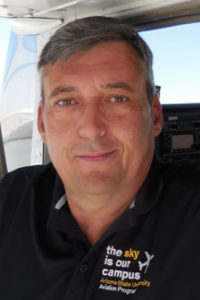 After retiring from the U.S. Air Force in 2006, Anthony Wende transitioned into working in commercial aviation. He spent nine years in business aviation, but found the work less fulfilling than his military service.
After retiring from the U.S. Air Force in 2006, Anthony Wende transitioned into working in commercial aviation. He spent nine years in business aviation, but found the work less fulfilling than his military service.
Now a lecturer in the Polytechnic School, Wende enjoys coming to work again.
“I feel that I can make a difference in so many lives, to help the outstanding students in my classes to succeed in life, business and their own personal development,” he says.
With more than 30 years experience in aviation maintenance and logistical support, 15 years as a private pilot and experience as a staff noncommissioned officer leading young airmen, Wende brings a uniquely broad skillset to the aviation program.
When Wende first enlisted in the Air Force, he intended to eventually become a pilot. However, when he was stationed at Williams Air Force Base — the future home of ASU’s Polytechnic campus — he fell in love with the T-38 Talon training jets he was assigned to maintaining.
“I decided that flying was going to be for fun, maintaining aircraft would be my career,” he recalls. “A decision I have never regretted!”
This semester, Wende will be teaching AMT 182: Private Pilot Ground School, AMT 220: Aviation Meteorology, AMT 350: Aircraft Design and Logistics, AMT 396: Aviation Professional and AMT 490: Regional Jet Operations Capstone.
Wende urges students to be on time and prepared with the required materials for his classes.
“I try to have fun in the classes, as I feel that makes learning more effective,” he says. “However, I have standards that must be met, and I won’t reward those students who don’t make the effort.”
When he’s not teaching or flying his private plane, Wende works on his four cars — which have a combined age of 138 years — and loves to hike with his German shepherd.
















